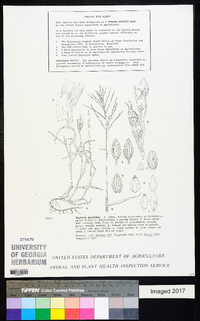
|
|
|
|
Family: Poaceae
Bluecouch
[Digitaria abyssinica var. scalarum (Schweinf.) Stapf, more] |
|
This project was made possible in part by the Institute of Museum and Library Services [MG-70-19-0057-19].
Powered by Symbiota




